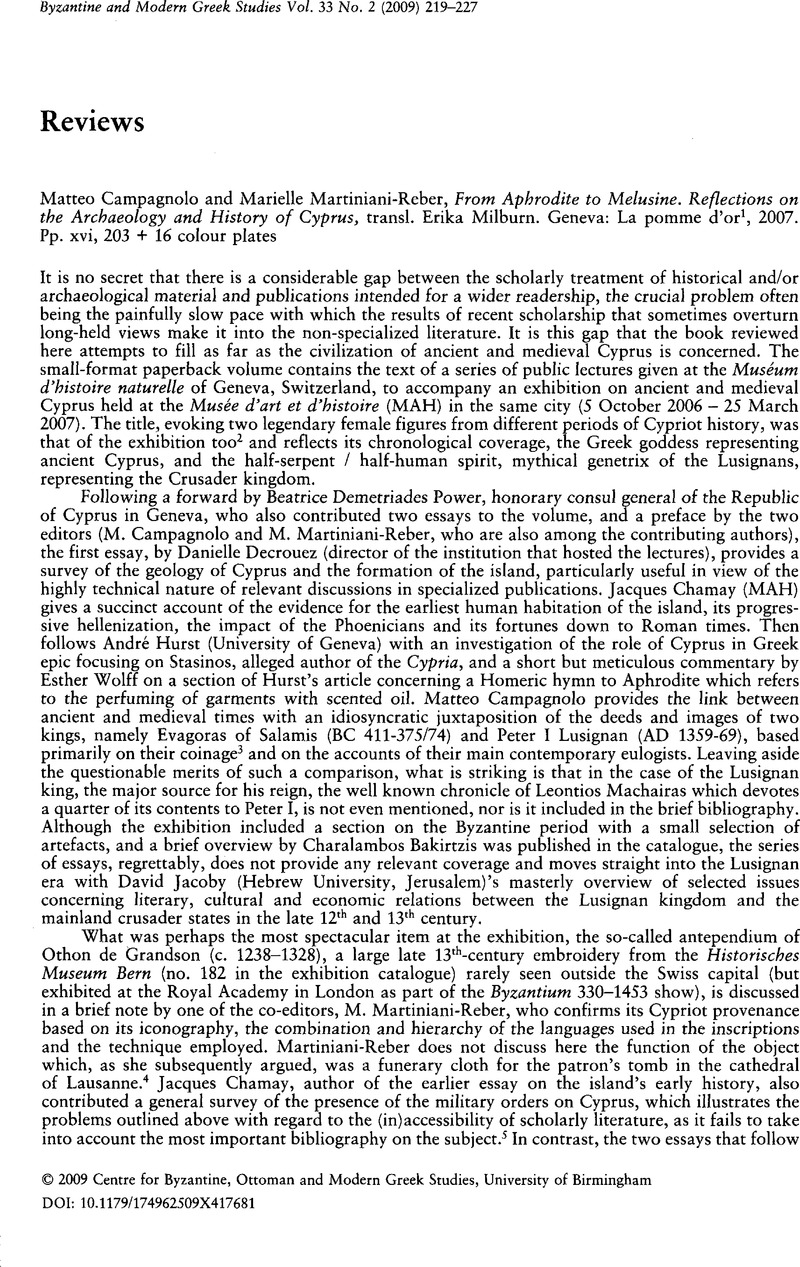No CrossRef data available.
Published online by Cambridge University Press: 22 January 2016

1 http://www.pommedor.ch. It is worth noting that the editorial board is chaired by Paul Magdalino and includes several Byzantinists (Simon Franklin, Maria Mavroudi, Arietta Papaconstantinou, Jean-Michel Spieser).
2 Chypre. D’Aphrodite à Mélusine, Skira - Musées d’art et d’histoire de la ville de Genève, eds. Campagnolo, M., Courtois, L., Martiniani-Reber, M., Michaelidou, L. (Milan 2006)Google Scholar.
3 Note, however, that no reference is made to the relevant items in the exhibition catalogue (nos. 61-62, 160-62).
4 Paper delivered at the Fourth International Cyprological Congress (Nicosia, 1 May 2008); see also Bacci’s, Michele entry in Byzantium 330-1453, ed. by Cormack, R. and Vassilaki, M. (London, 2008), no. 256 Google Scholar.
5 Numerous publications by Jonathan Riley-Smİth and Anthony Luttrell, and the recent three-volume work of Pierre-Vincent Claverie on the Templars published by the Cyprus Research Centre (L’ordre du Temple en Terre Sainte et à Chypre au XIII siècle, Nicosia 2005). The essay is fraught with minor inaccuracies: p. 94: Richard’s sister Joanna and his bride-to-be Berengaria did not join the crusader army until it reached Sicily; p. 96: the Hospitallers had acquired properties on Cyprus by 1203; p. 99: the original structures at Kolossi are only very partially preserved, and most Lusignan kings were of course buried in the Dominican church of Nicosia.
6 Among the most significant: p. 12 (‘discovered in on the south coast’), p. 52 n.10 (‘according to Selon Spyridakİs’), p. 80 (‘inn other coastal cities’), p. 94 (‘with the Saladin’), pp. 96-97 (‘Famagosta’ instead of Famagusta used elsewhere), p. 116 (‘cures which it affected’), p. 131 (‘Makarios Kalarites’, ‘Constantine Etiles’), pp. 131 and 136 (‘Pavia’ for Padua); p. 136 (‘1423’ for 1473), p. 150 (‘historien’), p. 170 (René and Louis de Mas Latrie are two different authors, son and father), p. 183 (‘Millieux’ for Milliex).